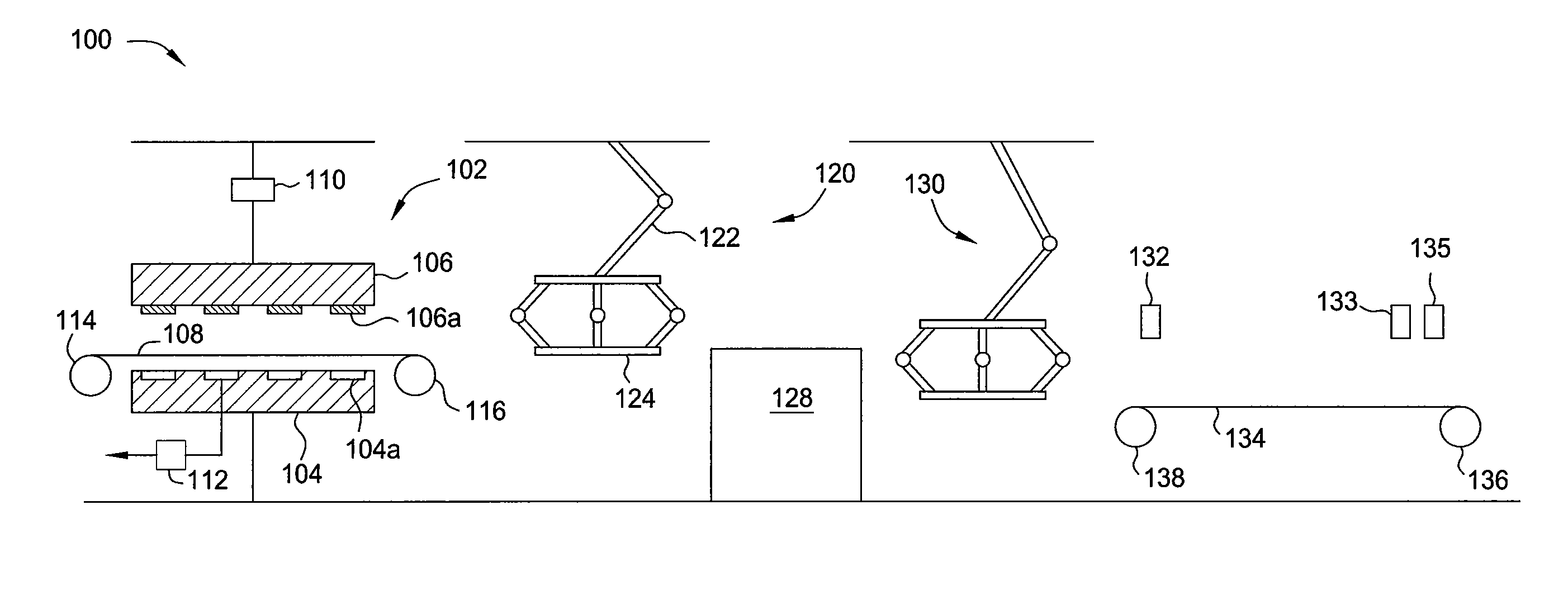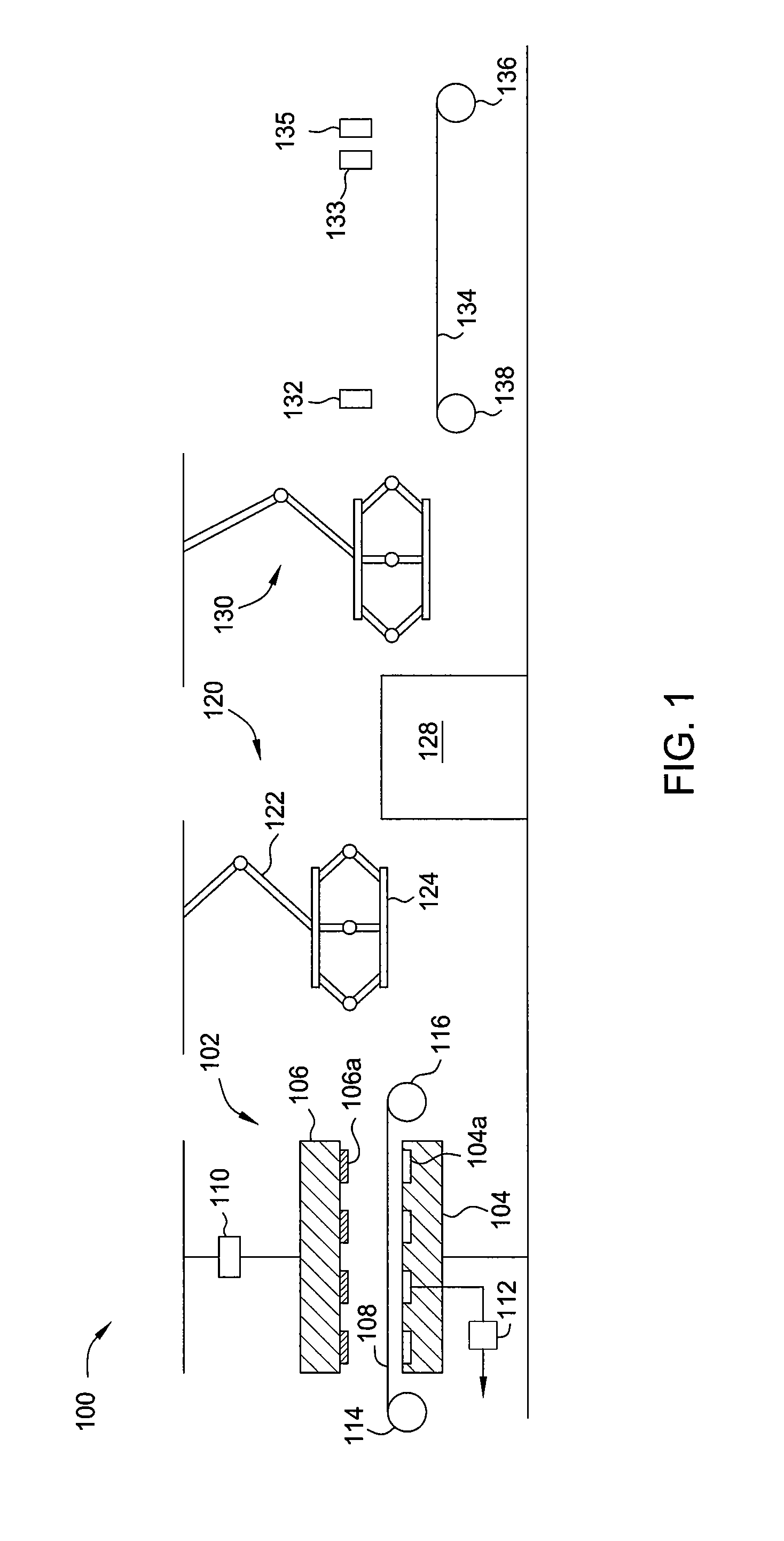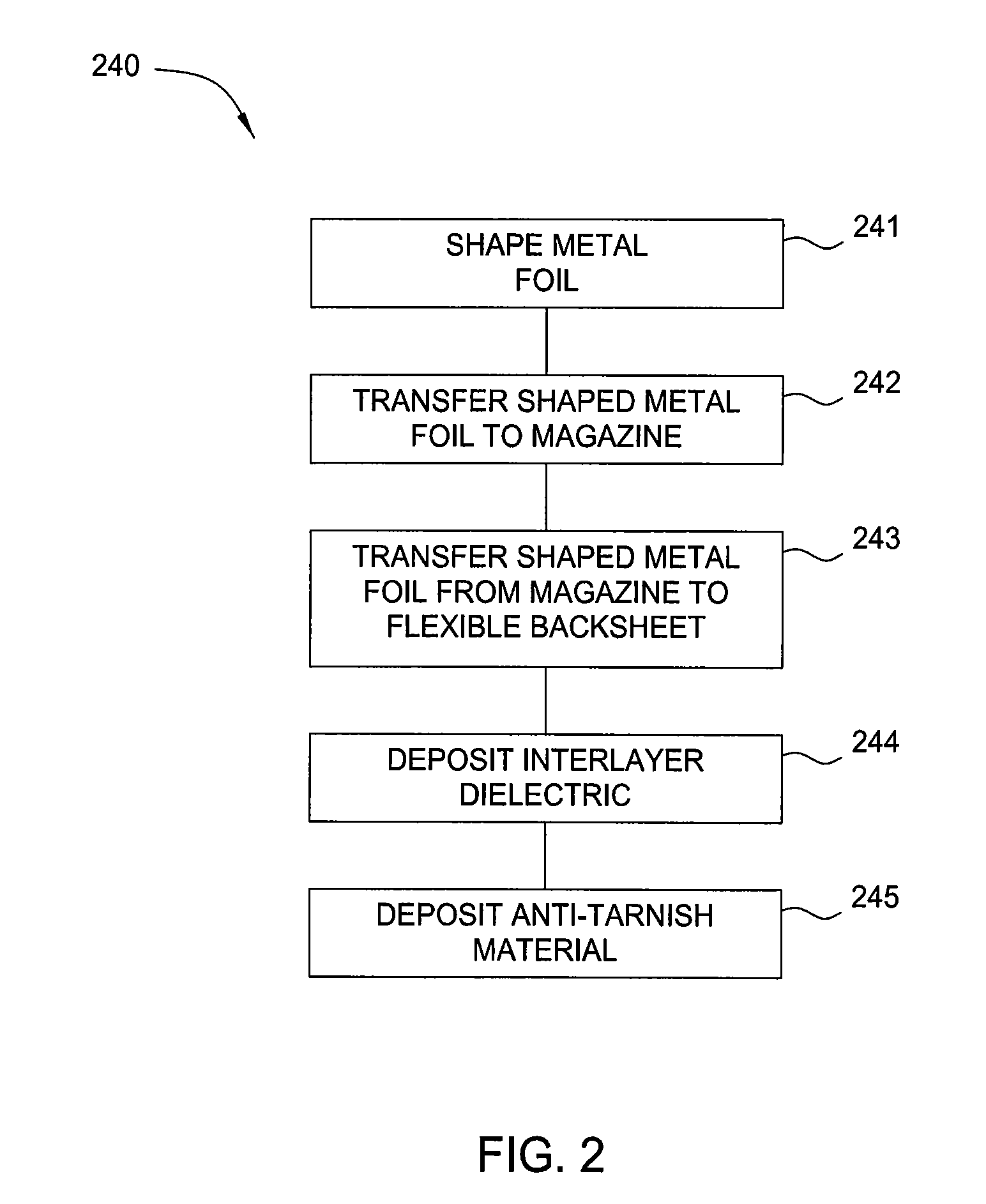Process for forming flexible substrates using punch press type techniques
- Summary
- Abstract
- Description
- Claims
- Application Information
AI Technical Summary
Benefits of technology
Problems solved by technology
Method used
Image
Examples
Embodiment Construction
[0024]Embodiments of the invention generally relate to methods of forming flexible substrates for use in photovoltaic modules. The methods include shaping a metal foil before adhering the metal foil to a flexible backsheet. An optional interlayer dielectric and anti-tarnish material may then be applied to the upper surface of the shaped metal foil disposed on the flexible backsheet. The metal foil may be shaped using die cutting, roller cutting, or laser cutting techniques. The die cutting, roller cutting, and laser cutting techniques simplify the flexible substrate formation processes by eliminating resist-printing and etching steps previously used to pattern metal foils. Additionally, the die cutting, roller cutting, and laser cutting techniques reduce the consumption of consumable materials previously used in the shaping of metal foils. The term “flexible substrate” as used herein generally refers to a multi-layered substrate suitable for use in roll-to-roll processing systems.
[0...
PUM
| Property | Measurement | Unit |
|---|---|---|
| Thickness | aaaaa | aaaaa |
| Thickness | aaaaa | aaaaa |
| Dielectric polarization enthalpy | aaaaa | aaaaa |
Abstract
Description
Claims
Application Information
 Login to View More
Login to View More - R&D
- Intellectual Property
- Life Sciences
- Materials
- Tech Scout
- Unparalleled Data Quality
- Higher Quality Content
- 60% Fewer Hallucinations
Browse by: Latest US Patents, China's latest patents, Technical Efficacy Thesaurus, Application Domain, Technology Topic, Popular Technical Reports.
© 2025 PatSnap. All rights reserved.Legal|Privacy policy|Modern Slavery Act Transparency Statement|Sitemap|About US| Contact US: help@patsnap.com



